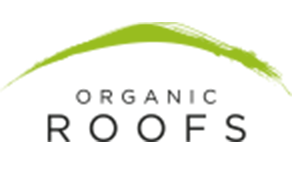The flower we particularly love this week is Red Campion (Silene dioica).
This beautiful native is one of the larger wildflowers in the UK growing up to 60cms tall. It has showy red/pink flowers and will happily grow in sun or shade. It grows on woodland edges and some of its folk names are thought to derive from the fear or guilt that agrarian culture has towards the gatherer/hunter societies it pushed out . . . they fear the spirits of those they destroyed which they believed to live on in the Campion
This beautiful native is one of the larger wildflowers in the UK growing up to 60cms tall. It has showy red/pink flowers and will happily grow in sun or shade. It likes to keep its feet moist though and is often found by riverbanks or road verges (as well as on green roofs!)
It has an extremely long flowering season and is out now until late October. Here it is blooming on our recent project, a 250m2 Boathouse in the New Forest for @avontyrrell
It’s also known as:
Adders’ Flower, Bachelor’s buttons, Billy buttons, Bird’s eye, Bob Robin, Brid een, Bull rattle, Bull’s eye, Cancer, Cock Robin, Cuckoo flower, Cìrean coileach (coxcomb), Devil’s flower, Dolly winter, Drunkards, Fleabites, Gipsy-flower, Gramfer-greygles, Mary’s Rose, Morning campion, Mother-dee, Mother-die, Red butcher, Red Jack, Red Riding Hood, Red Robin Hood, Robin flower, Robin Hood, Robin redbreast, Robin-in-the-hedge, Robin’s eye, Robin’s flower, Robroys, Jack-by-the-Hedge, Red campion, Red Mintchop, Sarah Janes, Scalded Apples, Soldiers’ Buttons, Wake Robin, cuckoo flower.
It grows on woodland edges and some of its folk names are thought to derive from the fear or guilt that agrarian culture has towards the gatherer/hunter societies it pushed out . . . they fear the spirits of those they destroyed which they believed to live on in the Campion . . . . . There does seem to be some association with Robin’s too, but maybe that is just because it is red, or Robin knows something we don’t!
But the Robin is not the only bird linked to this plant, in some areas it is also called cuckoo flower as it begins flowering at around the same time that cuckoos return to breed in Europe. We are blessed to have them visit down here in the south east of the UK and Lee has been lucky enough to hear one already this year.
The ‘Drunkards’ name is probably because the first part of the Latin name Silene derives from the name for the Greek god Silenus, a frisky forest god known for his love of wine and thought to have taught Dionysus everything he knows. He was reported as often being covered in sticky foam too, (in fact his name was derived from sialon, the Greek word for saliva), and likewise the female flowers of red Campion produce a froth that helps catch the pollen from visiting insects.
 Bees love it too and according to folklore, the Red Campion flower guards the honey stores of fiercely defensive fairies (see picture):
Bees love it too and according to folklore, the Red Campion flower guards the honey stores of fiercely defensive fairies (see picture):
And it is a particular delicacy for the Brimstone Butterfly, the Green-veined White Butterfly, the Orange-tip Butterfly and the Small White Butterfly.
It also has some kind of association with snakes, as the names show but like a lot of folk lore the link seems to have gotten mixed up along the way. Some say the seeds squished up will cure a snake bite, while others say that if you bring it into the house then you will get bitten by a snake next time you go out.
But most usefully if you ever find yourself caught short without any soap but you happen to have some Red Campion around, then the roots can be boiled up to make a great substitute for soap due to the saponin content in the roots.
Yet another great reason to have it growing on your roof!
Chamomile – Woden’s Gift for Green Roofs
Whether ‘Common’ (Anthemis nobilis), ‘German’ (Matricaria chamomilla), or ‘stinking’ (Anthemis cotula), Chamomiles look very much alike, with big daisy like…


Organic Roofs Environmental Impact Update (Spring 2014)
As spring begins to move toward summer it seems a good time to update you with some of the things…



Become part of our Organic Roof community. Get the lowdown on our research and tips